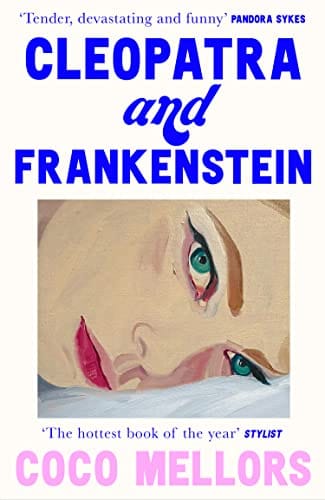Cleopatra and Frankenstein: Why Coco Mellors’s Debut Novel Hits Home
Discover Coco Mellors’s debut novel Cleopatra and Frankenstein in this in-depth review covering plot, themes, characters, and why the love story resonates today.

Introduction
When a debut novel leaps straight into bestseller lists and inspires feverish book-club discussions, it is worth pausing to ask why. Coco Mellors’s Cleopatra and Frankenstein does just that. Mixing a whirlwind romance, razor-sharp social observation, and heart-piercing insight into mental health, the book offers a fresh spin on the classic “opposites attract” premise. In roughly 800 words, this review explores the plot, characters, themes, and stylistic flourishes that have made the title one of the most buzzed-about literary fiction releases of recent years.
Plot Overview
The story opens on a cold New Year’s Eve in New York City. Cleopatra “Cleo” Frank, a 24-year-old British painter scrambling to extend her student visa, meets Frank — a charismatic, 40-something advertising executive — in the messy aftermath of a failed party. Their chance encounter blooms into an impulsive romance, culminating in a marriage of convenience that promises Cleo a green card and Frank the kind of intoxicating love he has never quite managed to sustain. Over the course of a single year, the couple’s circle of friends, family, and ex-lovers is drawn into the undertow of their relationship, exposing fault lines that neither protagonist saw coming.
New York as a Character
Mellors renders Manhattan with a cinematic vividness that turns the city into an omnipresent narrator. Rooftop bars glitter, cramped studios suffocate, and subway platforms pulse with possibility. This atmospheric backdrop amplifies the couple’s highs and lows, creating a sense that the city itself is conspiring to push them together or tear them apart.
Meet the Characters
Cleo. Haunted by an eating disorder and a perpetual sense of unbelonging, Cleo channels her anxiety into her vibrant, surreal canvases. Her tenderness is disarming, yet her fear of abandonment fuels many of the novel’s conflicts.
Frank. A successful ad man with enough disposable income to fund spontaneous adventures, Frank hides his alcoholic tendencies behind expensive Scotch and self-deprecating humor. His desire to be truly “seen” drives his fascination with Cleo’s art and vulnerability.
Eleanor. Frank’s witty but lonely sister, who provides both comic relief and gut-punch honesty. Her dating misadventures and longing for stability mirror Cleo’s deeper anxieties.
Quentin & Santiago. Cleo’s best friend Quentin, a queer actor, and Frank’s colleague Santiago, a jaded creative director, round out the supporting cast, adding texture and subplots that illuminate the central marriage from multiple angles.
Major Themes
Love vs. Dependency
The novel refuses to paint romance in pastel hues. Mellors interrogates the thin line between love and dependency, suggesting that chemistry, while electrifying, cannot compensate for unhealed trauma. As Cleo’s visa issues and Frank’s drinking escalate, the pair’s impulsive vows begin to resemble shackles rather than liberated devotion.
Mental Health and Addiction
Eating disorders, depression, and substance abuse are portrayed without sensationalism. Mellors shows how these struggles can hide beneath professional success or bohemian glamour, challenging the misconception that privilege immunizes people from pain. Therapy sessions, group meetings, and internal monologues provide an unflinching look at recovery’s nonlinear path.
Art and Identity
Cleo’s paintings become a silent chorus, reflecting her evolving sense of self. Frank, who sells dreams for a living through advertising, is entranced by the authenticity he perceives in Cleo’s work. The tension between commercial creativity and fine art emerges as a subtle but consistent through-line.
Immigration and Belonging
Because Cleo’s legal status hinges on her marriage, every marital disagreement acquires existential weight. The book deftly critiques the bureaucratic hoops that non-citizens must jump through, underscoring how love can be complicated by geopolitical realities.
Writing Style & Tone
Mellors writes in brisk, sensory sentences that echo Sally Rooney’s clarity while injecting a lushness reminiscent of Donna Tartt. Chapters rotate perspectives, granting readers intimate access to side characters who might otherwise serve as mere foils. This kaleidoscopic structure widens the emotional stakes and keeps the pacing compulsive; no viewpoint overstays its welcome.
Representation & Diversity
The novel introduces queer, mixed-race, and neurodivergent characters without turning them into checkboxes. Issues of privilege, colorism, and gender expectations surface organically through dialogue rather than heavy-handed exposition, creating a social milieu that feels authentically 2020s.
Who Will Enjoy Cleopatra and Frankenstein?
If you loved the messy intimacy of Normal People or the razor-sharp city portraits in A Little Life, Mellors’s debut belongs on your shelf. Book-club members will appreciate the moral gray zones ripe for debate, while casual readers will find the prose addictive and the emotional payoffs cathartic.
Final Thoughts
Cleopatra and Frankenstein is neither a fairytale nor a tragedy; it is a nuanced exploration of what happens after the “meet-cute” fades and real life begins. Coco Mellors captures the volatility of love in an era of precarious visas, viral success, and quietly eroding mental health. The result is a novel that lingers like the aftertaste of strong coffee — bitter, sweet, and impossible to forget.



